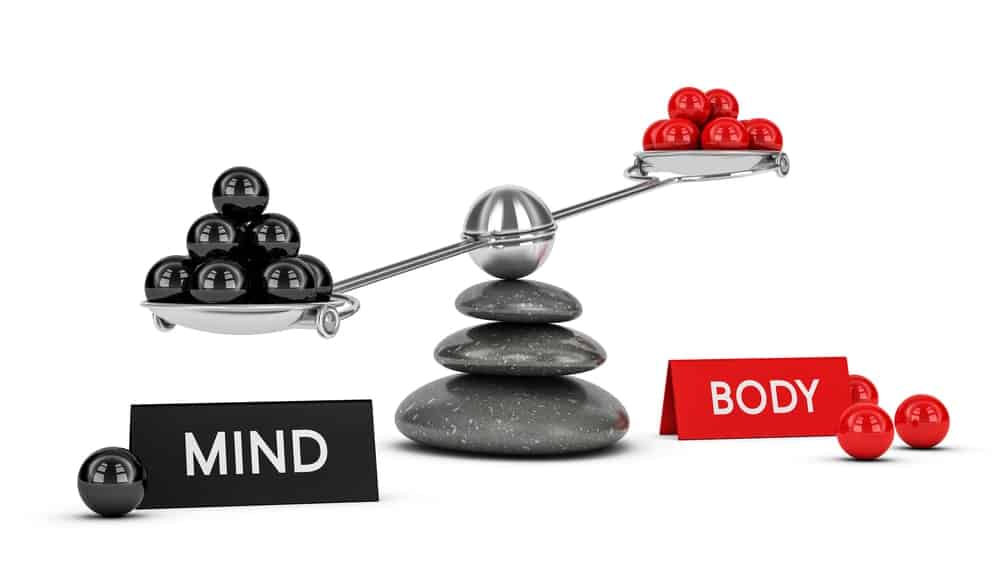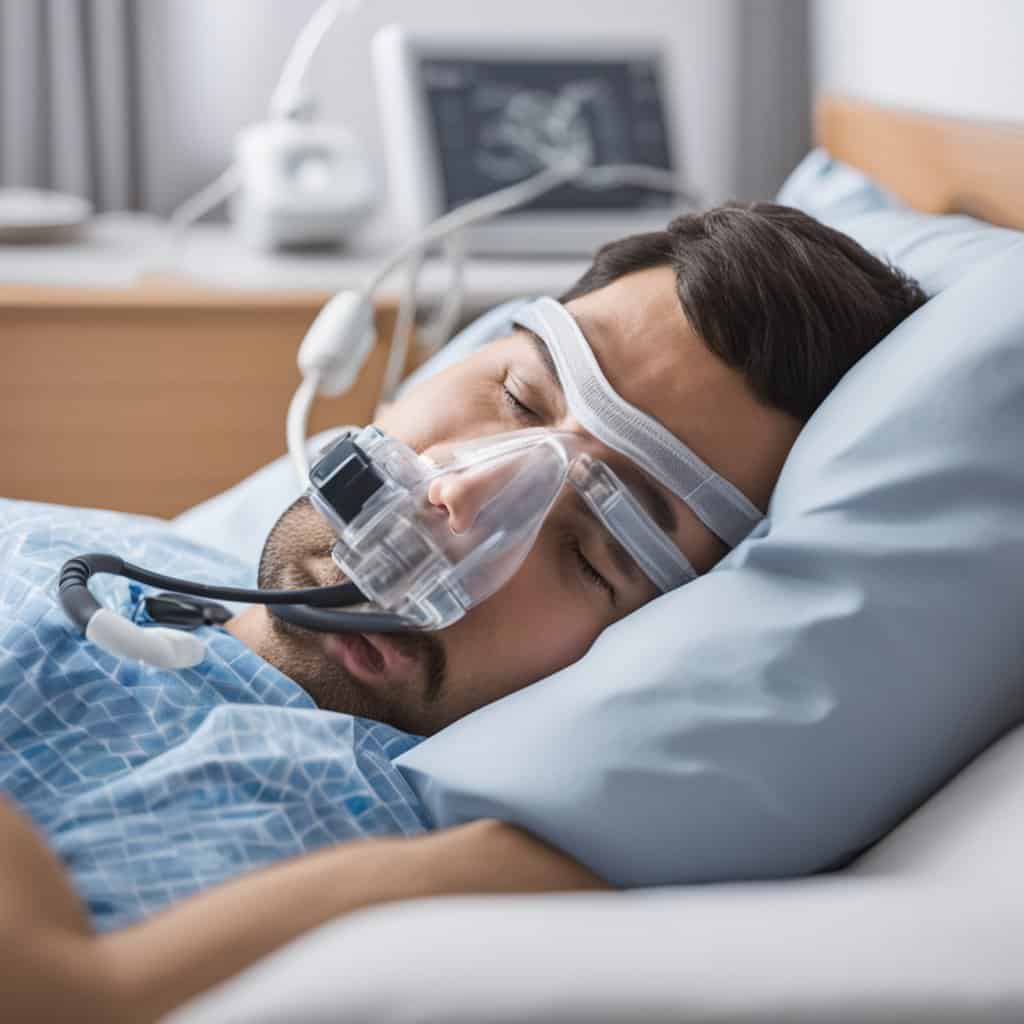There is so much information within ourselves that can help us lead rich, fulfilling lives. When we explore strong emotions and the connection to body sensations we find that the emotional and physical systems are closely interconnected.
Fundamental Terminologies
Let us define some of the fundamental terminologies to understand the connection between body sensations and emotions.
1. Emotions
Emotions are feelings that occur quickly in response to an event that is either undesired or desired, a stimulus. It’s a natural state that arises due to neurophysiology, which is how the nervous system functions. Examples of emotions include; fear, disgust, happiness, sadness, and anger.
When you are afraid, your heart starts to beat faster, muscles contract, or your mouth may become dry. These bodily reactions occur automatically within our body due to the emotions stimulating our brain.
Emotions activate different parts of our brain, sending signals to required body parts and functions, and we experience the body sensation, what we feel, in the physical state.
2. Body sensations
Body Sensations are experiences that arise in the body. Examples include feeling pain, pleasure, warmth, fatigue, tickles, aches, and shivering.
3. Feelings
Feelings – The simplest explanation of a feeling is that it’s an emotional state or reaction. You can feel love, desire, lust, compassion, sympathy, concern, sorrow, and pity, or a variety of other feelings.
4. Thoughts
Thoughts – These are opinions, beliefs, ideas we think about ourselves and everything surrounding us. Thoughts, unlike emotions they can be changed by life experiences and education.
How And Where Are Emotions Located In The Body?
The brain is responsible for coordinating the response to emotions. The feeling of that emotion is then felt in some or many parts of the body. For instance, when you are about to meet someone you adore, that feeling of butterflies in the stomach is a sensation that represents happiness and excitement.
Emotions are associated with the limbic system, a group of interconnected structures located deep in the brain. In the limbic system, the different limbic structures process and control various emotions.
You may have heard of one such limbic structure called the amygdala. The amygdala coordinates emotional responses to things in the environment. As a result, it is the origin of fear and anger.
We also have the hypothalamus that regulates body temperature and controls sexual responses. There is also the limbic cortex that impacts judgment, motivation, and mood. The brain’s emotional system sends signals from the limbic system to various body parts to handle the situation.
The process occurs unconsciously.
Even though not everyone experiences emotions in the same way, there is a general map of where emotions arise in the body. Let’s do a quick test on an emotion we have all experienced – fear. In which part of your body do you feel fear? Does your heart race faster? Do your muscles contract?
These body sensations occur to help you cope and overcome the fear. The fear leads to the fight, flight, freeze response. If you are afraid of snakes, the body sensations will allow you to be more alert before the snake bites or lunges towards you.
The body connection and where depression presents itself is in all parts of the body whereas, envy and surprise are located at the chest and head. In comparison, pride and disgust stimulate the upper part of the head.
The feeling of love is in the heart or stomach primarily. This love feeling may also be strong throughout the entire body. Fear and danger are emotions that activate in the chest area.
Anger is slightly different as the emotion is present in the upper part of the body and the hands. Feelings of anger often stretch out to the hands, and this is why an angry person is most likely to create a fist, throw objects, punch a wall or do something violent using their hands. Just because the feeling is present, the act of violence is not justifiable as sensations in the body don’t make us do things; we consciously choose whether to act on our feelings or not.
Below is a series of images showing common emotions, their location and intensity within the body.

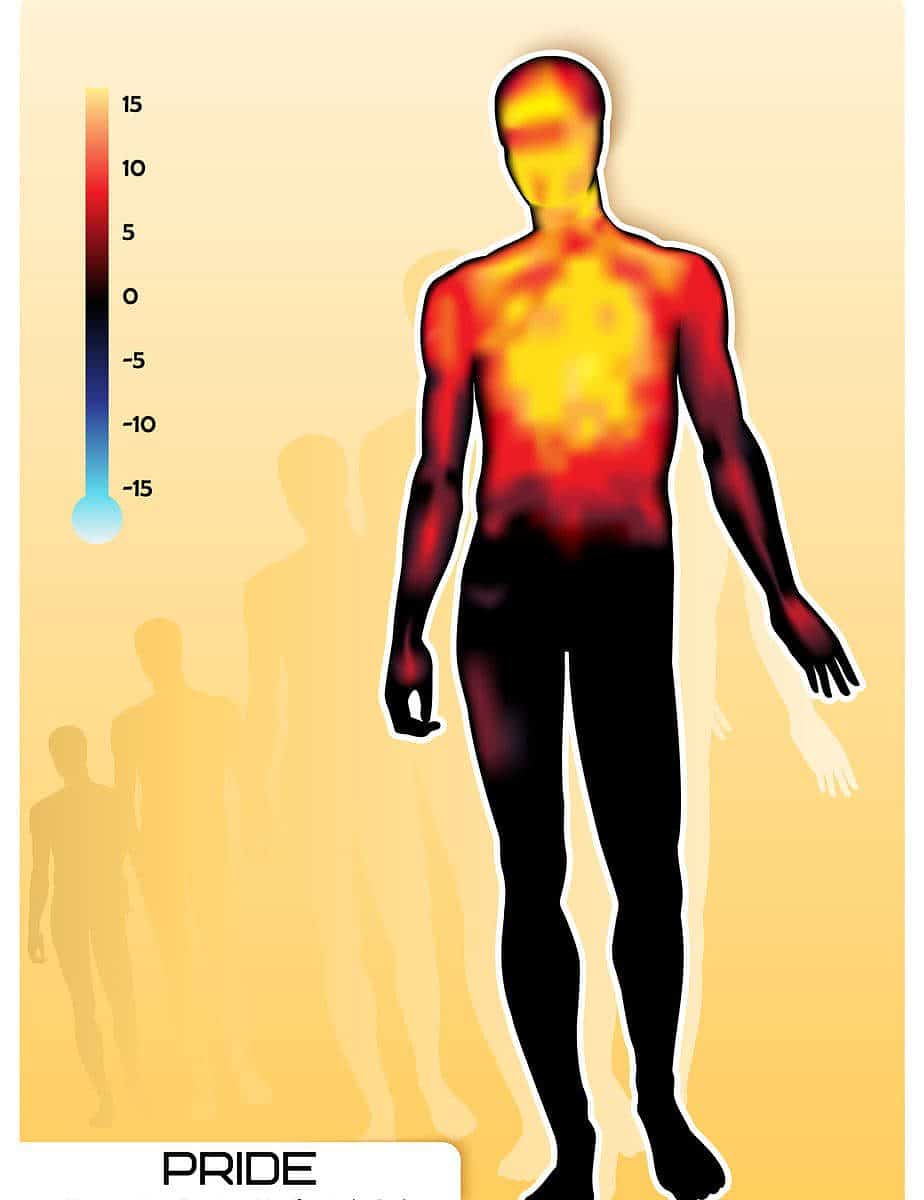
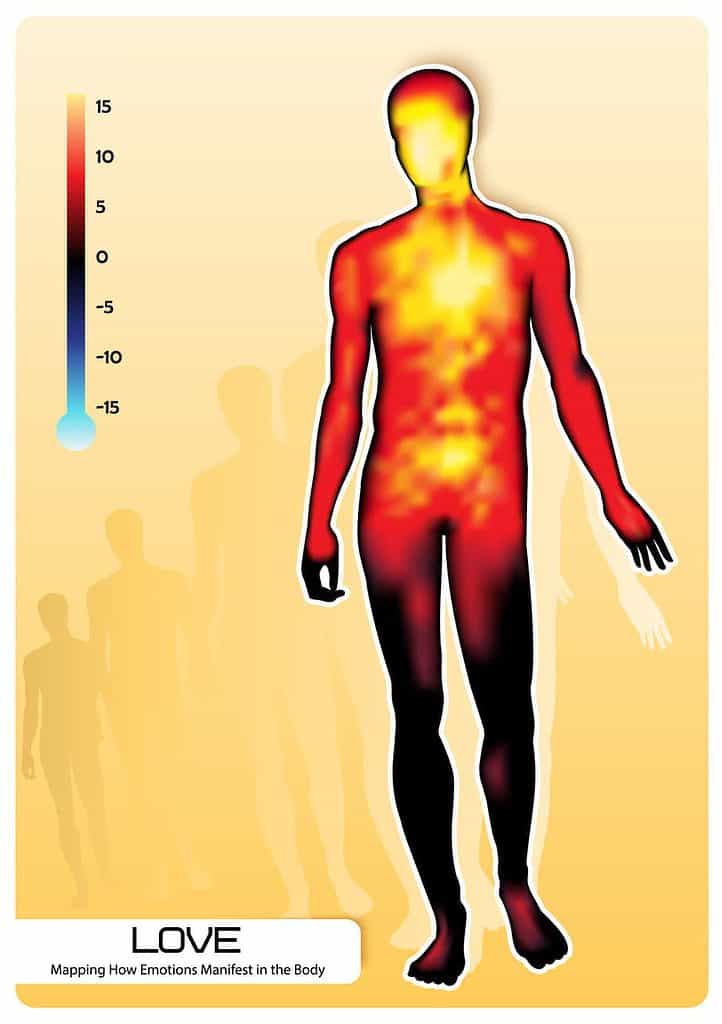
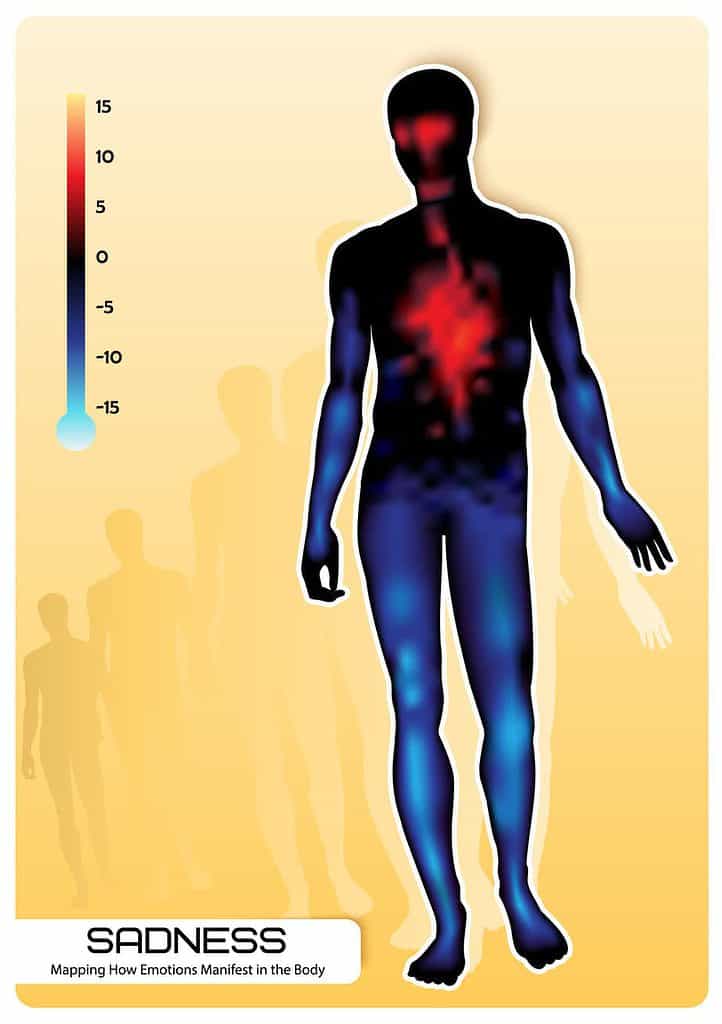
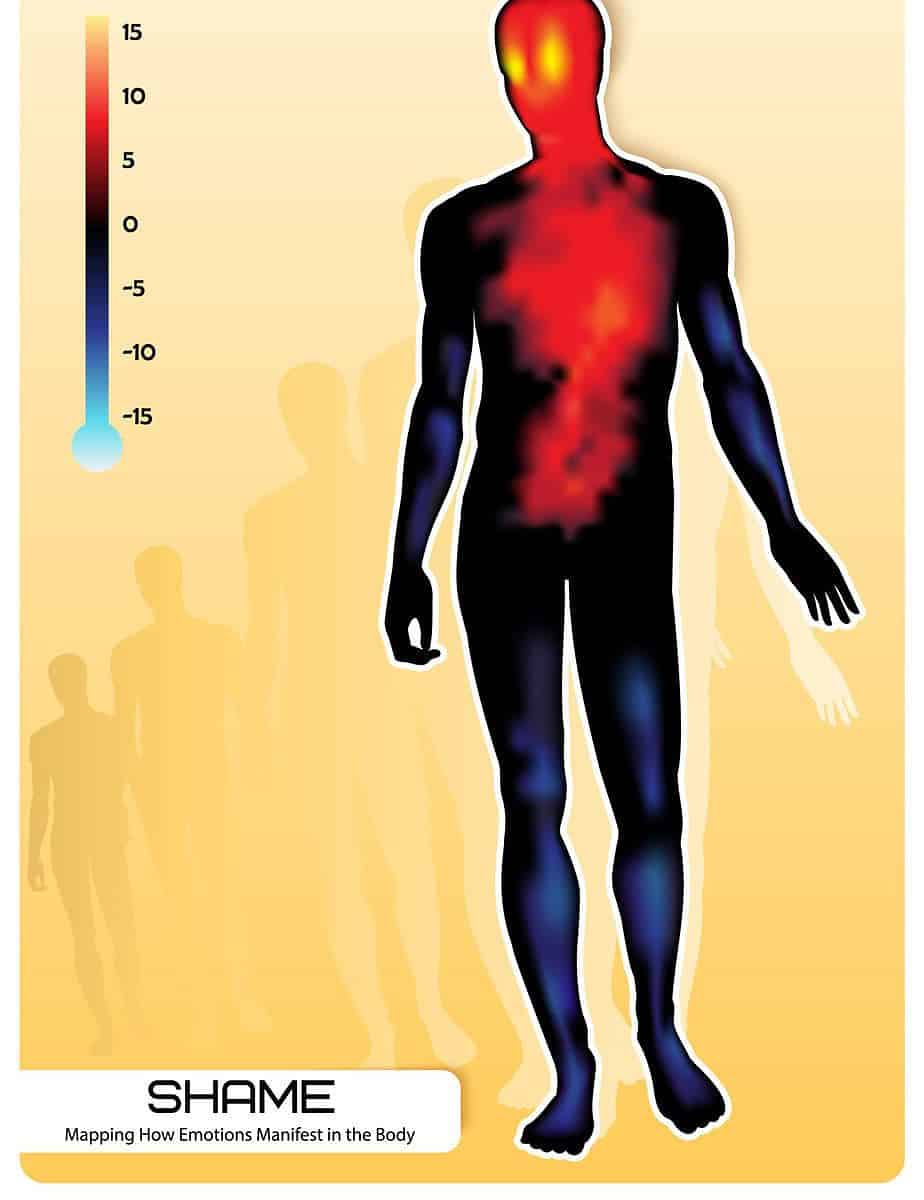
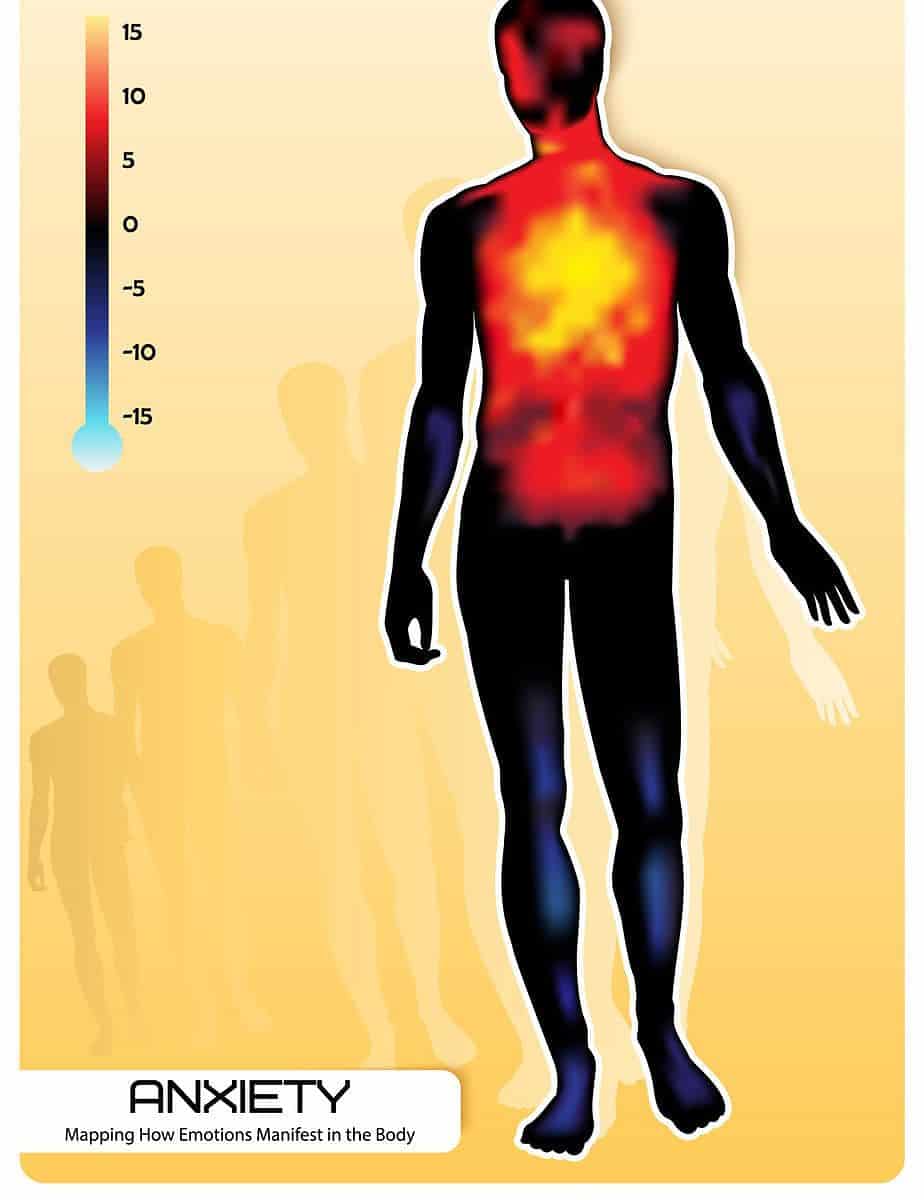
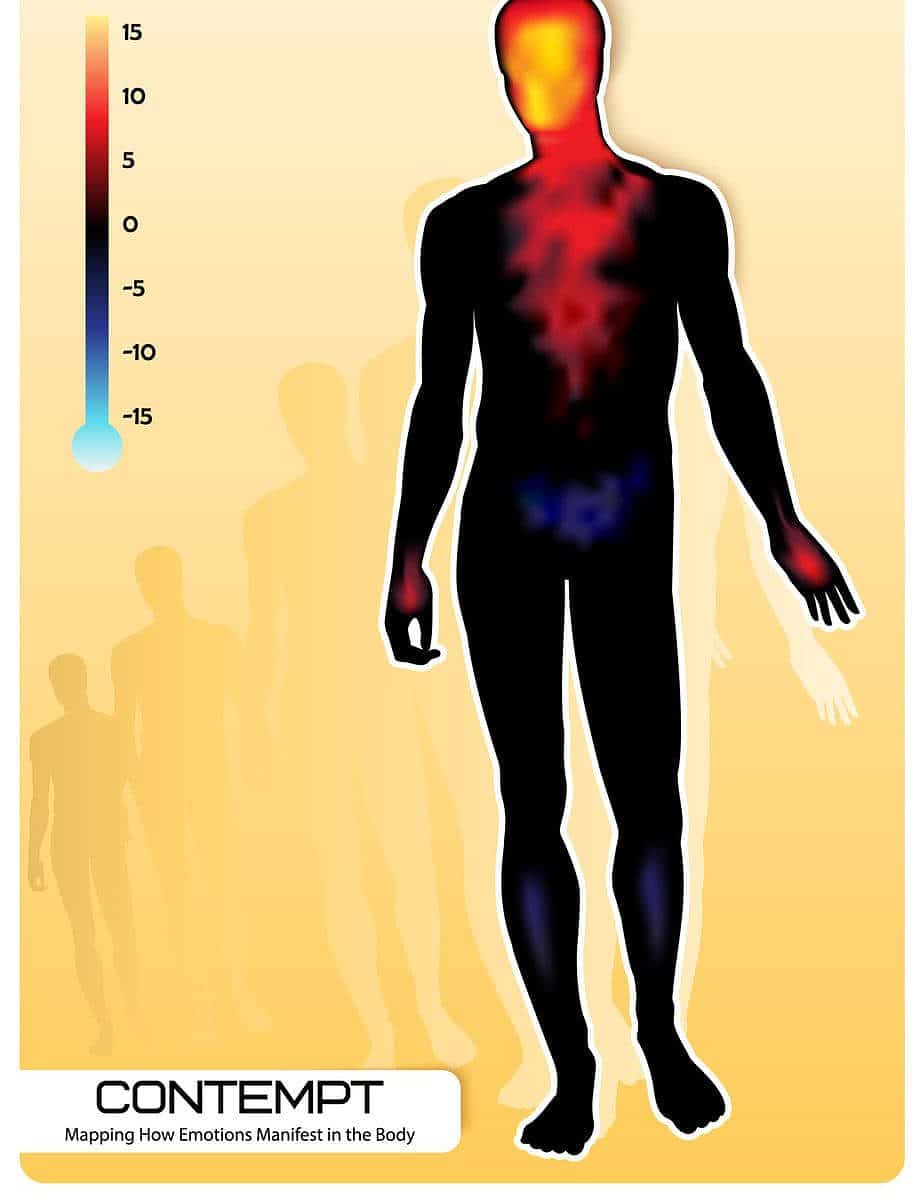
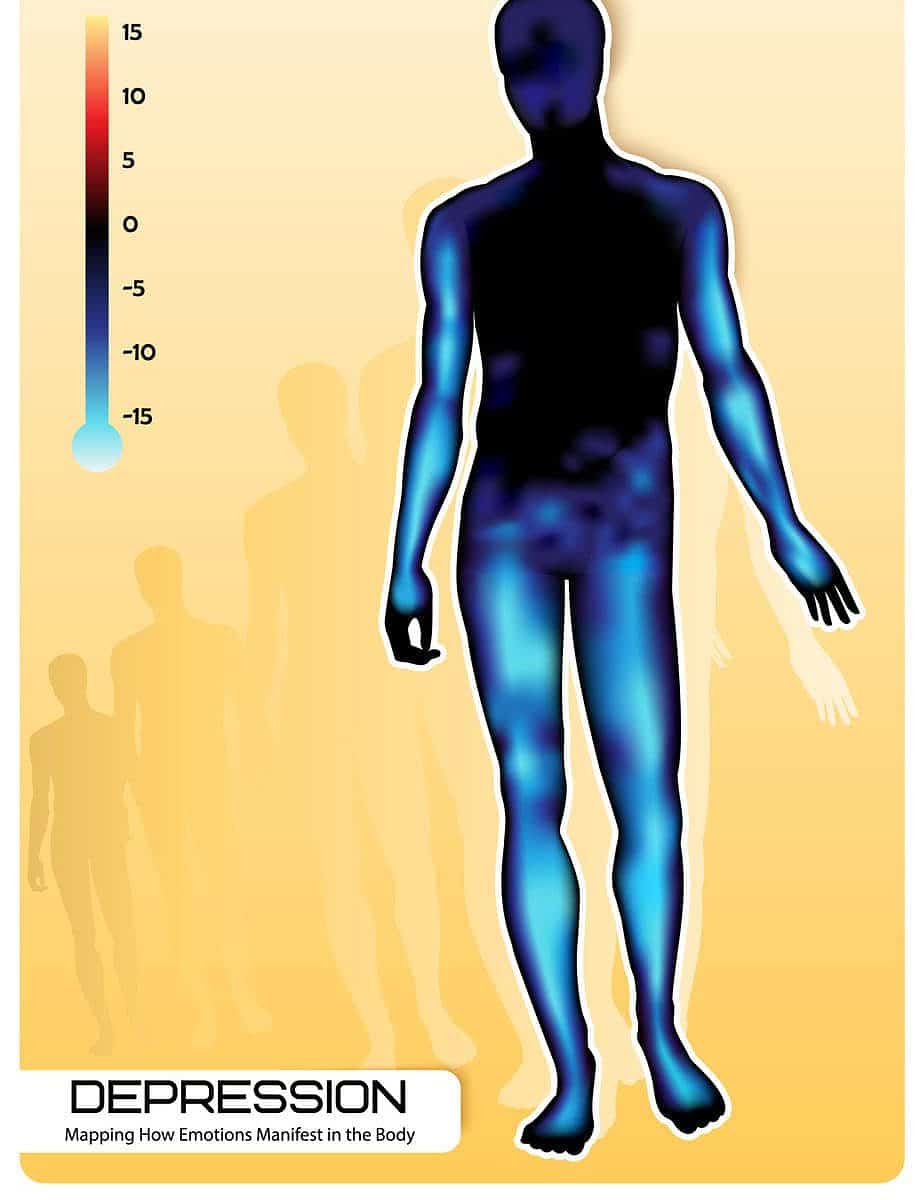
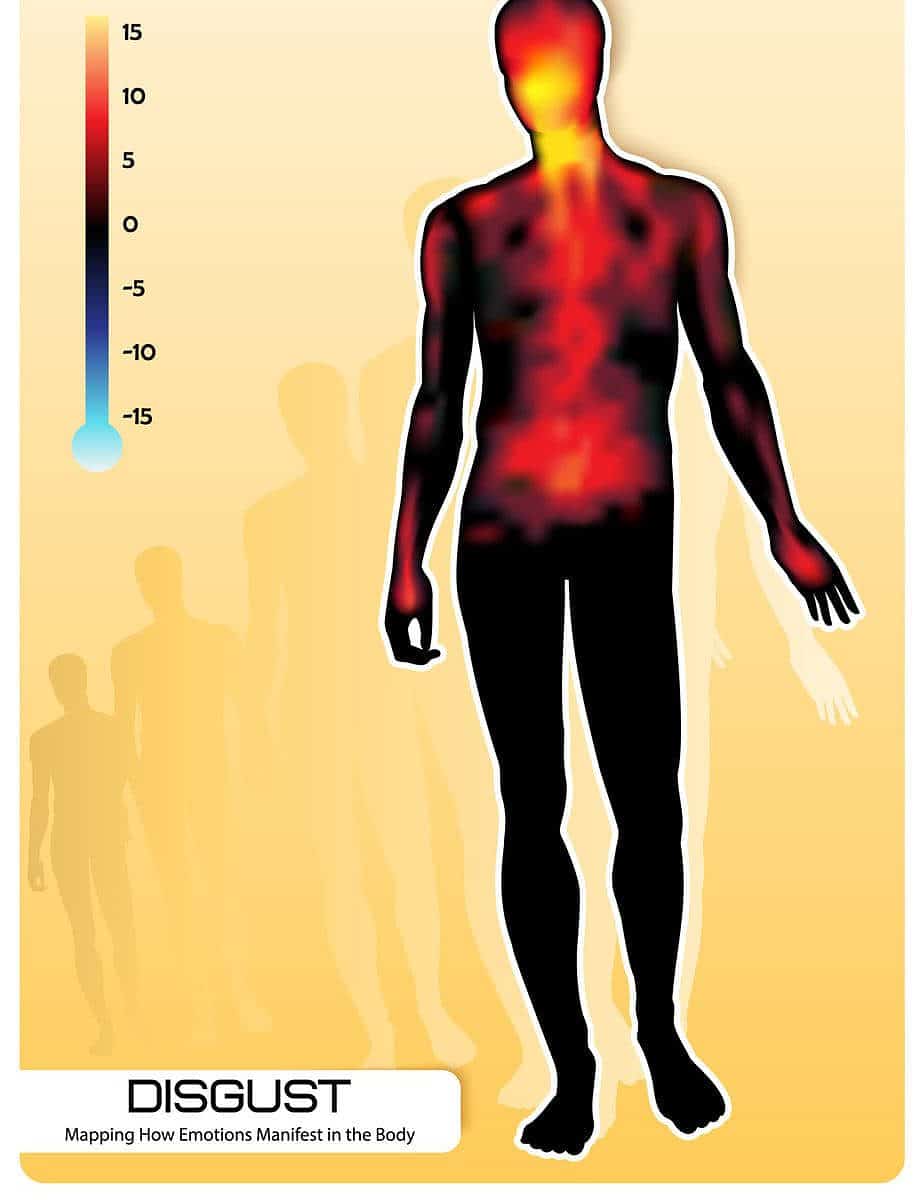
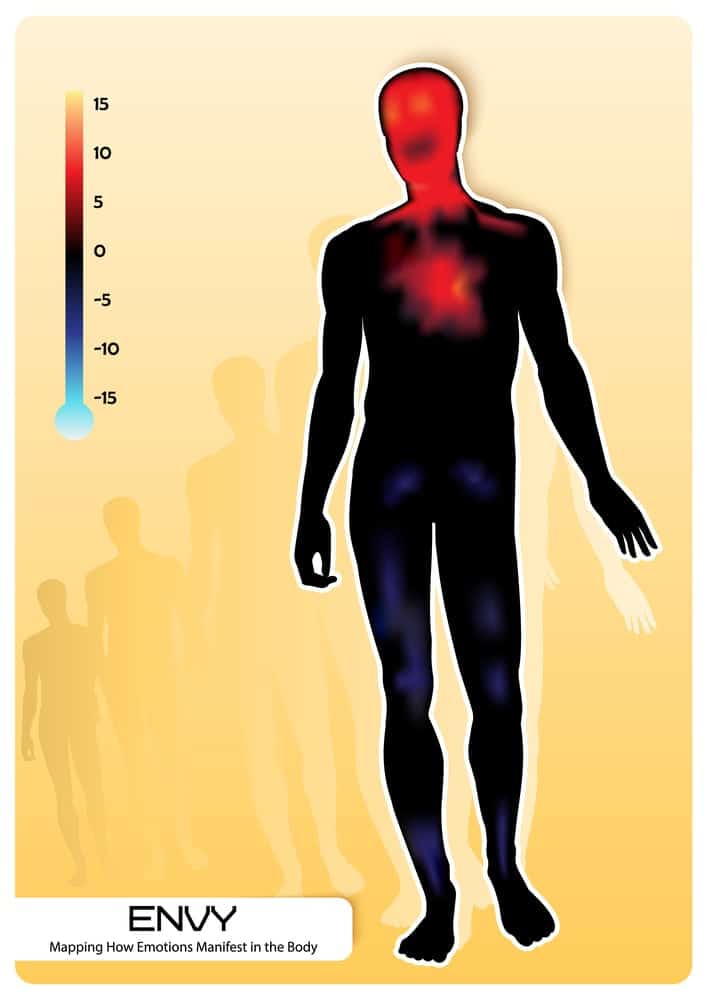
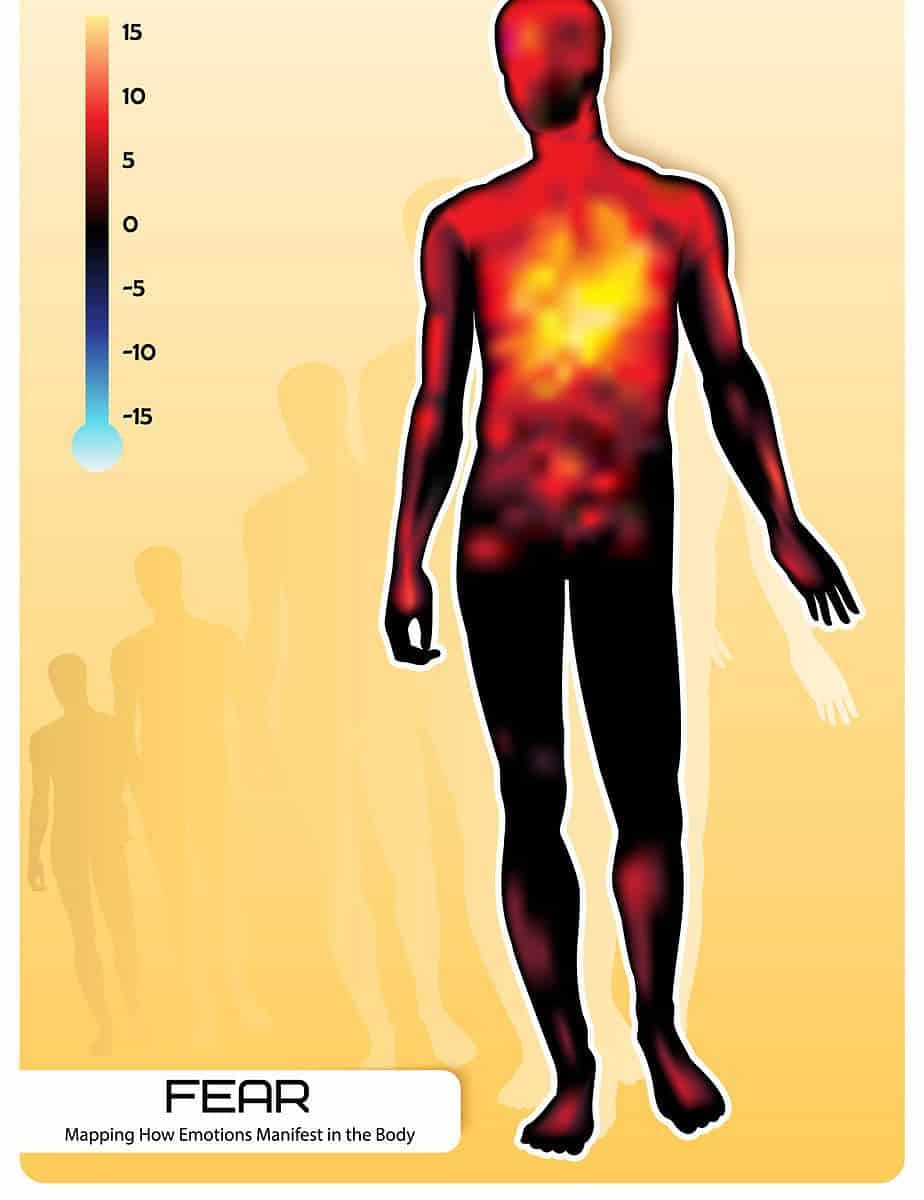
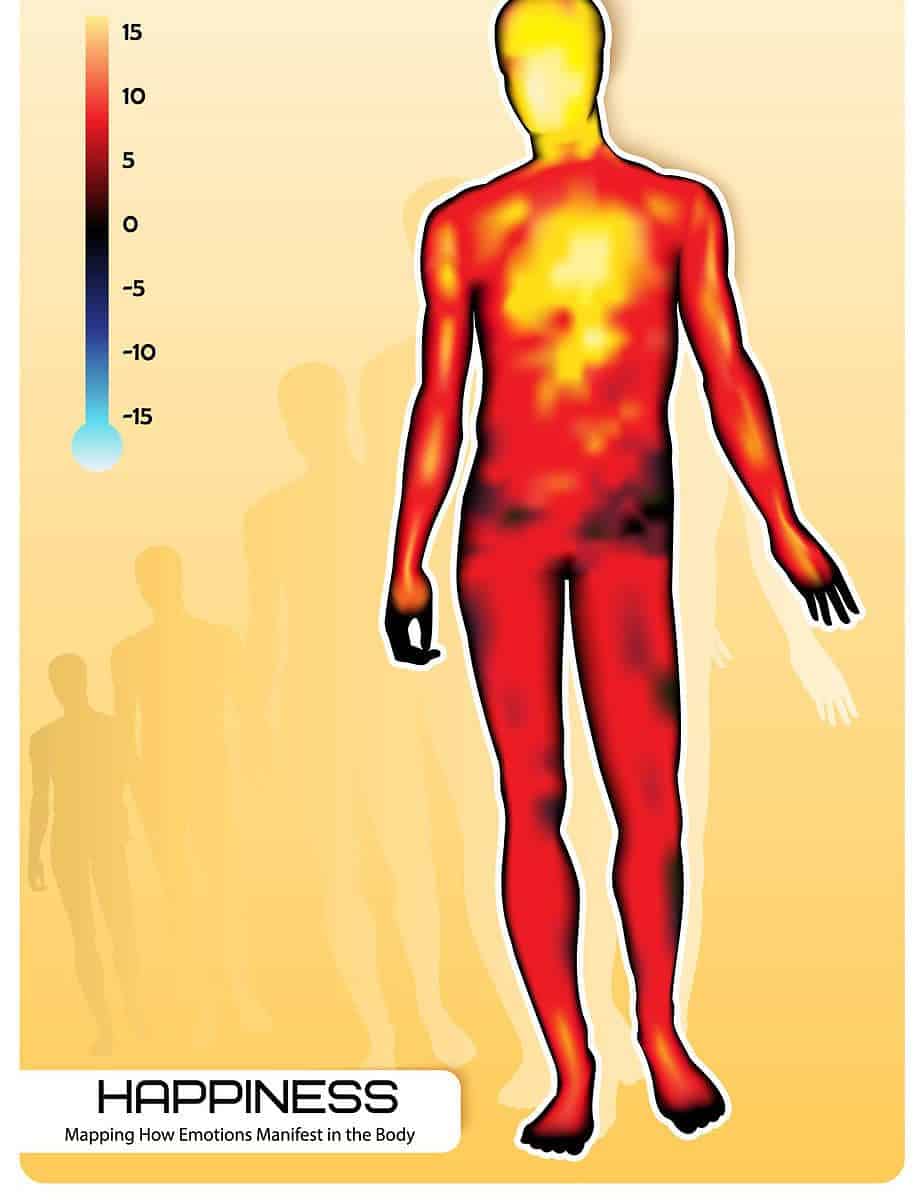
Are Thoughts And Emotions Connected?
A brief answer to this question is – what we think influences what we feel. So yes, they are connected.
Thoughts and emotions have a strong connection, and thoughts can trigger emotions. For instance, if you have an upcoming test and haven’t studied, you will probably feel anxiety and fear.
Additionally, our life experiences shape our thoughts. Experiences and what we think about certain things will determine how we feel and react towards them. For instance, a person who is afraid of heights will feel distressed every time they get into an elevator.
Thoughts influence emotions, and these two have another connection. This other connection involves the changing of one’s thoughts to change your feelings.
There are two types of beliefs that all people have in common; some trust their feelings, and others perceive feelings as irrational and shouldn’t be trusted. Both sides of this coin have validity.
Our experiences provide the framework for our thoughts hence our emotional life, and if we had terrible experiences where our lives were in jeopardy, our thoughts and feelings could protect us in current situations that are not a threat to us. Alternatively, depending solely on our feelings and acting on our feelings may not be prudent.
What do you believe? As you ponder on this, remember emotions are reactions to your thoughts. These two things are always on autopilot, and that’s why at times, we may be confused about what we are feeling.
If you change your way of thinking, you can change your emotions. Lets say you are unhappy because you don’t own a car? Was there a time you were happy, and you still didn’t own a car? The thing that is making you unhappy is the thought of not having a car but not the actual object. Once you realize this, you will switch from being blue to feeling contented.
Does the Body Remember Situations When the Brain Does Not?
The link between body sensations and memory is intriguing and complex and science has been looking at brain, body and nerve processes for linkages. Throughout our lifetime, our brain stores plenty of memories. Some memories are stored short-term and others long-term.
With time, our brain holds the more relevant memories and stores away other memories. Surprisingly enough, you may still be able to recall these stored memories from when you were young. They may include feeling sad, depressed, anxious, fearful, unsafe.
However, the body also has had a response that is entirely separate from its emotional counterpart. If you have experienced a traumatic event such as a fire, your body will remember this situation even when your brain does not. The brain locks away such memories, and time helps you put those memories away to focus on what is occurring in your life today.
Ten years pass, and you may have forgotten about the fire altogether. However, suppose you find yourself in a place with the same conditions as you experienced ten years earlier. In that case, your body will automatically remember that situation even when your brain does not. Your body may recall the heat or the smoke that was choking you.
Despite all organs in our body working together, each part of us has a unique function and design to perform its duty distinctively. Should your body experience a scenario that might cause harm to it, it will immediately tap into your memories and look for past experiences so that it can shield itself from injury and damage.
Here is another example to help you see how the body remembers. Have you ever ridden a bike? Years later, you get on a bike for the first time after many years of not riding. Maybe you were a bit shaky at first but quickly carried on riding. Your body recalls the memory of riding. It is unconscious thought, implicit memory, meaning you don’t have to think about how to ride a bike; it just happens.
Your body automatically puts you in the right position to ride without you thinking about it. Emotions and their connection with body sensations are responsible for how we relate with others and participate in social situations.
Final Thoughts
Knowing where your feelings are in the body gives you an in-depth understanding of your feelings. By learning the connection between emotions and thoughts, you can change the latter to connect with others fully. It is also crucial to distinguish when body sensations and feelings aren’t matching and reach out for help to work this through to live a full life. Thoughts, emotions and body sensations are all connected one to another.

